
South Dakota Teachers Take a Road Trip to the California Coast to Bring Ocean Literacy Back to Students in the Great Plains
Spencer Cody, a secondary school teacher in Edmunds Central School District in South Dakota, was the recipient of an Ocean Exploration Education grant from NOAA Ocean Exploration and the National Marine Sanctuary Foundation designed to build capacity for ocean literacy and science, technology, engineering and mathematics workforce development. His proposal, titled ‘The Great Plains Ocean Institute’, enabled 16 middle and high school teachers, mostly from public and tribal schools in rural districts with significant Native American populations, the opportunity to participate in a professional development program. The teacher cohort developed marine science education modules to enhance ocean literacy and awareness of marine science career opportunities in students living over 1000 miles from the coast. The Institute culminated in a week-long road trip to national marine sanctuaries along the California coast on a school bus! Teachers used the wide array of field experiences in California to enhance and develop new ocean science lessons for their students. Follow along daily as Great Plains Ocean Institute teacher, Kaitlynn Krack, shares their week of adventures.
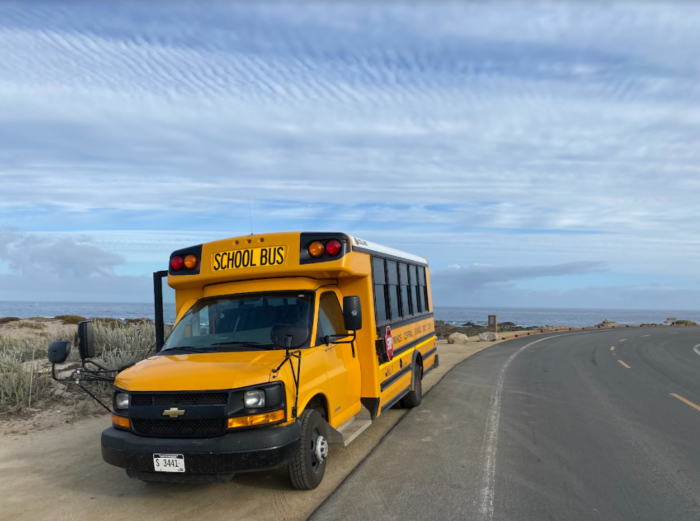
Photo credit: Spencer Cody
Day 1: Getting on the Road! Having made the trek from Hayti, South Dakota to Pierre, South Dakota, I boarded the bus with excitement! Traveling across the states of South Dakota and Wyoming made for a long day, but I saw things I had never had the opportunity to before.
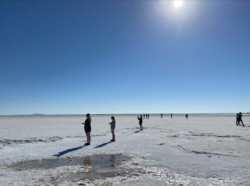
Photo credit: Spencer Cody
We saw the Devil’s Pass and Independence Rock. It was a great time to really get to know some of my fellow teachers from across the state. Rolling into Salt Lake City was a spectacular end to a long day on the bus.
Day 2: On the road to Monterey, California. Leaving Salt Lake City, we were able to see the massive Great Salt Lake and take in the sights of salt production. A quick stop at the Bonneville Salt Flats showed me that I really did not have a good understanding of this unique land feature. The land here was soft and yet hard and probably one of the most interesting things I have ever encountered. Totally unique to the world!
Day 3: Tide Pools and Aquariums!
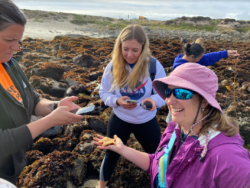
Photo credit: Spencer Cody
After the long bus ride, we finally made our way to Monterey, California. The first day we took in the sights along the shores of Monterey Bay National Marine Sanctuary, including the Great Tide Pool in Pacific Grove, Ed Ricketts’s Workshop, and the Monterey Bay Aquarium. The tide pool provided a glimpse at an ever-changing world. Animals and plants living within this habitat are particularly adapted to an ever-changing home due to rhythmic tidal movements. I was able to see first-hand the beauty in all the diversity of life in the tide pools. We were able to see starfish, many anemones, crabs, and clams all living in the shallow waters. We examined massive kelp and other algal life too. This was the first time during our trip that I really got a sense of how important the ocean is and how interconnected everything is.
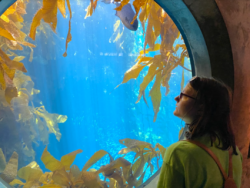
Photo credit: Spencer Cody
After the tide pools we headed on to explore Ed Ricketts’s workplace—The Pacific Biological Laboratories Museum. Ed was the inspiration for Doc Ricketts in the John Steinbeck novels Cannery Row and Sea of Cortez. This man was responsible for collecting many of the samples sent to be studied at universities around the world. He is also credited with starting a theory of ecology that all things are interconnected and should be studied as such.
After learning about the fascinating history of Ed Ricketts, we moved on to the Monterey Bay Aquarium. This was amazing! The care and attention this organization has put into their aquarium really shows. It is a spectacular experience from start to finish. I was able to see so many amazing aquatic species all interacting with each other. To see the beauty and sheer uniqueness of so many species really underscored the importance of the ocean.
Day 4: Off to see the Whales!
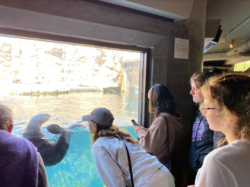
Photo credit: Spencer Cody
This experience will forever stick with me. We embarked on a whale watching cruise of Monterey Bay National Marine Sanctuary. We were able to view many different species of dolphin, seals, birds, and of course whales!! Out on the water we saw common longnose dolphins, Risso’s dolphins, sea lions, gulls, cormorants, and humpback whales. The minute I saw the dolphins, I knew how important it was to protect the ocean. I learned of new species of dolphins that are now one of my favorite types: the Risso’s dolphin. They stay on the top of the water warming themselves because they dive very deep to get their preferred food—squid and octopus. The catching of the squid causes these dolphins to get white markings on their bodies (scars essentially). I just loved seeing them floating so calmly on the water. During the excursion, we were able to spot a few different humpback whales. I found out these whales are monitored by scientists, and they even have their own names and identities. Each tail is unique, and this helps sanctuary scientists and researchers identify and track them year to year. We were also able to spot a young whale that had not been named yet! I could go out and watch these amazing animals every single day.
Days 5, 6, & 7: Adventures in Channel Islands National Marine Sanctuary.
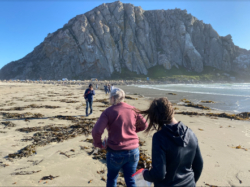
Photo credit: Spencer Cody
Having made our way down the Big Sur Coast Highway (Highway 1), we made our way to Oxnard, California. Here we explored one of America’s least known, but amazing, national parks: The Channel Islands. Over the course of the three days, we took in three islands: Anacapa Island, Santa Cruz Island, and Santa Rosa Island. Although close together, each island offered different ecosystems, flora, and fauna. Day one on the islands was a cruise around Anacapa Island. On the ride out, we were able to view dolphins and many different birds. Once there, we learned the importance of this little island, which is the breeding ground for 90% of the brown pelicans of California. One little island can host such a large population. We also learned the devastating effects that humans can have on animals. This island is quite a few miles off the coast of California, however, the use of DDT as a pesticide caused a near total collapse of the pelican population. It really hit home to me how our actions have long-lasting and far-reaching consequences.
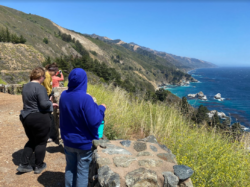
Photo credit: Spencer Cody
Day two in the Channel Islands took us out to Santa Rosa Island. This island was far larger than I anticipated. While there, I was able to talk with a naturalist who was doing fox counts. It was fascinating to talk with her about how they do the work on this island. While on the island, I was able to see many unique features and life. I did find out, however, that I may be allergic to one little plant that was blooming on this island. I found this interesting since I have never been near this plant before. The final day in the Channel Islands took us to Santa Cruz Island. I was amazed at the difference in plant life on this island. The climate allowed for more deciduous type trees and generally the temperature here seemed less intense.
During our visit to the Channel Islands, we were exposed to a remarkable diversity of sea life among the island chain along with all those species on the islands that cannot be seen on the mainland. Upon concluding our exploration of the Channel Islands, we headed back home. The experiences and knowledge gained from this field experience to national marine sanctuaries along the California coast will be used to enhance and develop new ocean science curriculum for myself and the rest of the institute teachers back in our own districts.
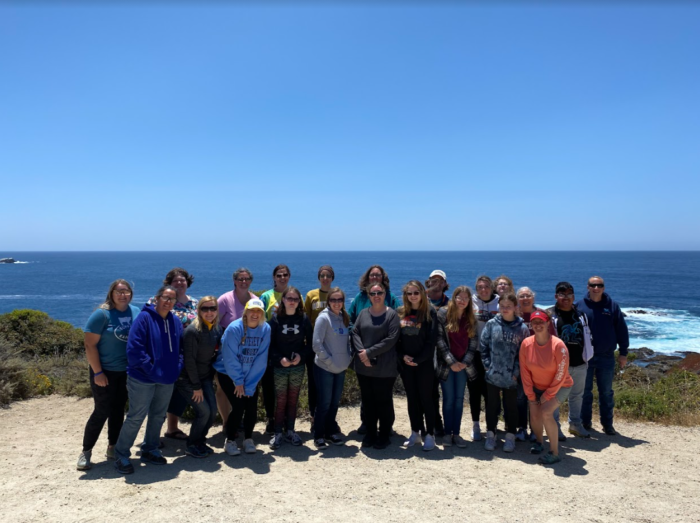
Photo credit: Spencer Cody
